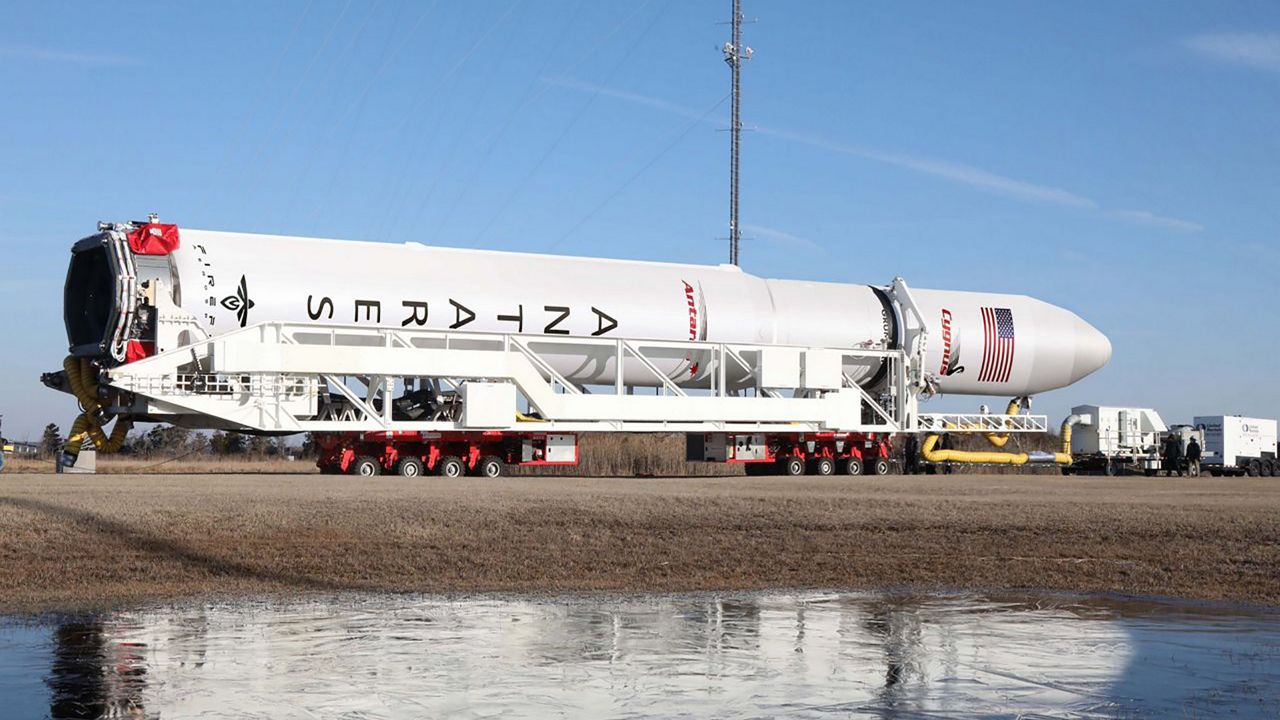After Russia’s invasion of Ukraine, there were some questions as to how Northrop Grumman would continue launching its Commercial Resupply Services 2 contract missions to the International Space Station on behalf of NASA.
Not only are the first stage engines of its Antares 230+ powered by two Russian-made RD-181 engines, but the stage one core tank is designed and verified by Ukrainian company KB Yuzhnoye and built by Yuzhmash, a Ukrainian state-owned aerospace manufacturer.
What You Need To Know
- Texas-based Firefly Aerospace will build the first stage for Northrop Grumman’s upcoming Antares 330 rocket
- The partnership removes NG’s reliance on Ukrainian and Russian supply chains for the rockets it uses to resupply the International Space Station
- Both companies are also working on a medium launch vehicle, which will be able to launch from Cape Canaveral Space Force Station among other sites
On Monday, Virginia-based Northrop Grumman announced that following the use of its current two Antares rockets for the NG-18 and NG-19 CRS2 missions, it would no longer need to tap its former Ukrainian and Russian supply chains thanks to Texas-based Firefly Aerospace.
The two companies are working on a new U.S.-built first stage of the Antares rocket, the Antares 330, and a new medium launch vehicle “to serve commercial, civil and national security space launch markets,” Northrop Grumman said in a press release.
The Antares 330 rocket first stage will feature seven of Firefly’s Miranda engines. Kurt Eberly, the director of Space Launch Programs at Northrop Grumman, told Spectrum News in a statement that Firefly will be providing the rest of the first stage as well.
“This teaming approach is unlike any other in the industry," Eberly said in a statement. "With nearly 100 successful space launches, Northrop Grumman is taking advantage of its decades-long proven rocket development and launch operations experience, combined with the mature propulsion technology, agility and innovative culture of Firefly Aerospace to upgrade Antares to a higher performing 330 version, followed by the development of a new medium-lift rocket for the launch industry."
He added that this was not a quick decision and the partnership between Northrop Grumman and Firefly preceded Russia’s invasion of Ukraine.
“Northrop Grumman has been working with Firefly Aerospace on opportunities to revolutionize the space launch sector for over a year,” Eberly said. “Firefly’s propulsion technology utilizes the same propellants as the current Antares rocket, which minimizes launch site upgrades.”
Impacts for the Space Coast
The new Antares 330 is not expected to make its debut until 2024, but with the company still having missions to fill under the CRS2 contract that began in 2019, Northrop Grumman confirmed to Spectrum News that it procured three launches with SpaceX to get its Cygnus spacecraft to the ISS.
Northrop Grumman did not confirm if those missions will launch from Florida’s Cape Canaveral or from SpaceX’s launchpad at Vandenberg Space Force Base in California.
A more definite bit of news for Florida’s Space Coast is related to the upcoming medium launch vehicle that Northrop Grumman is developing with Firefly.
Eberly said that once it’s completed, it “would be launched from Cape Canaveral and Vandenberg Space Force Bases along with Wallops Island, Va.” Wallops is home to the Mid-Atlantic Regional Spaceport and is the current site of Antares rocket launches.
No date was provided regarding when the medium launch vehicle would begin operations.




